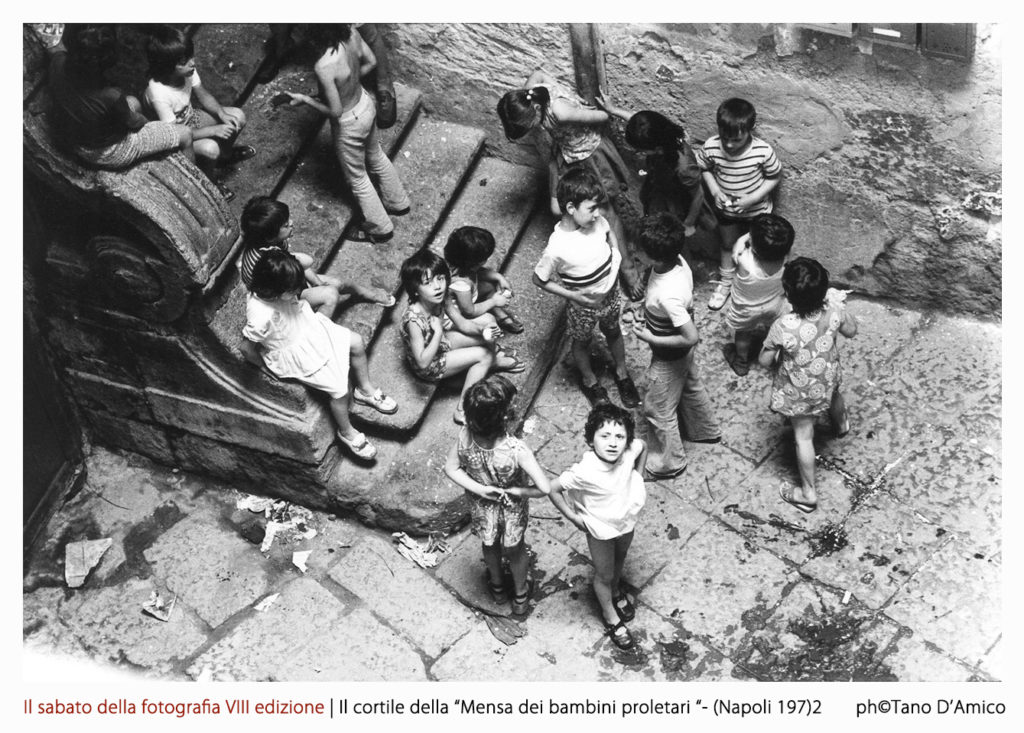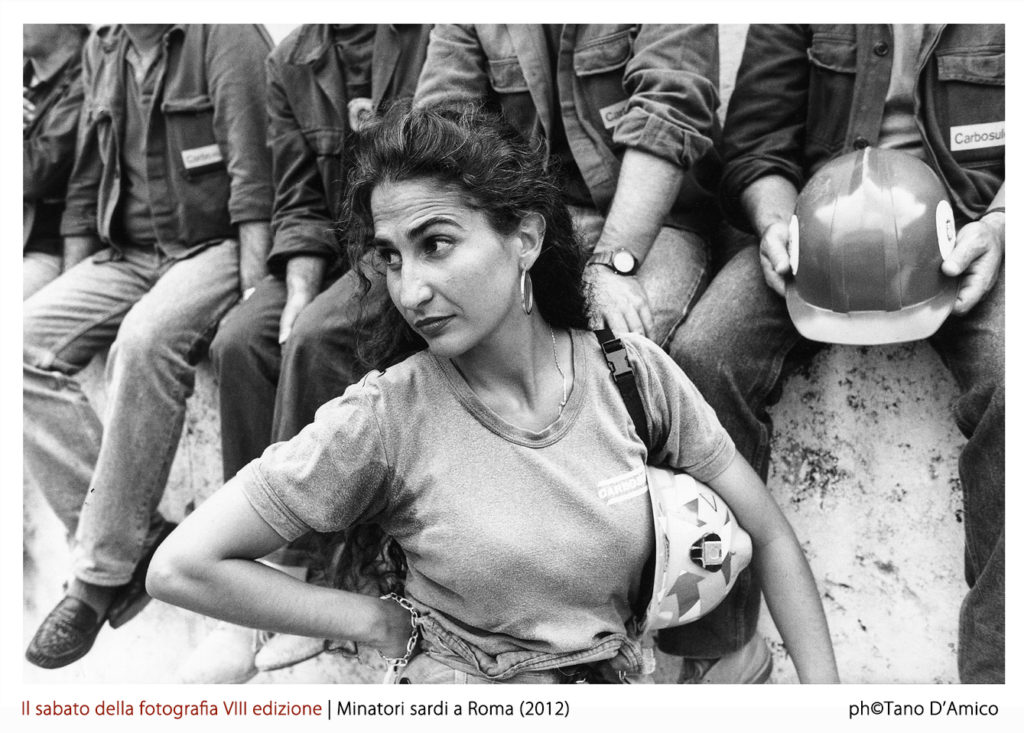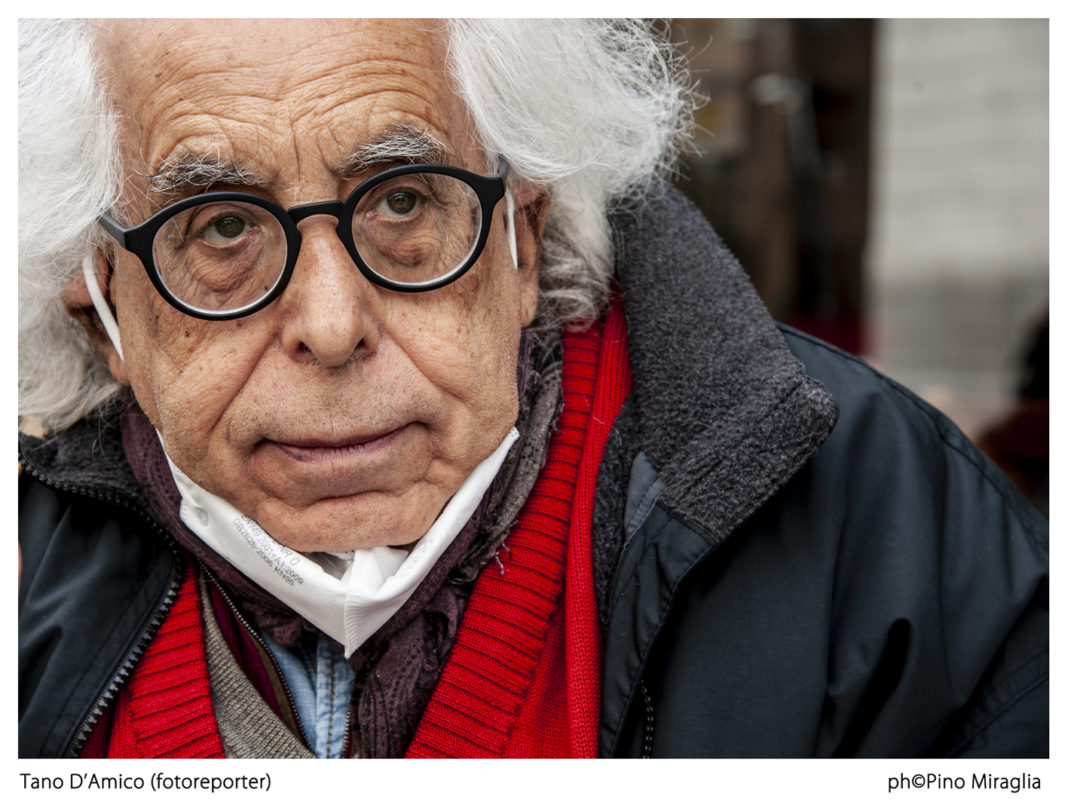
Il sabato della fotografia vi dà appuntamento il 6 aprile con Tano D’Amico. Nella sezione Un passo indietro della rassegna curata da Pino Miraglia in Sala Assoli, lo spazio teatrale dei Quartieri Spagnoli ospiterà ancora un grande nome della fotografia italiana con la mostra La memoria ribelle di Tano, accessibile negli orari di apertura del teatro fino al 19 maggio.
Il pubblico potrà incontrare l’artista alle 11.30, insieme a Igina Di Napoli (direttore artistico di Casa del Contemporaneo) e a Sergio Brancato (docente di sociologia dei processi culturali della comunicazione presso l’Università degli Studi di Napoli Federico II), prendendo parte al dibattito Dissenso, politica e società: dagli anni Settanta ad oggi.
Dopo la discussione, sarà proiettato film Il grande Blek (1987), opera prima di Giuseppe Piccioni. Ingresso libero fino a esaurimento posti. Per 𝗶𝗻𝗳𝗼: +39 345 2204383 e + 39 345 4679142, anche whatsapp (feriali 10-13 e 16-19), info@casadelcontemporaneo.it – www.salaassoli.it
Le foto di Tano D’Amico testimoniano gli ultimi cinquant’anni di vita e storia italiana. Nei suoi scatti si respira la nostra memoria, la storia di classi sociali che hanno garantito conquiste civili e diritti a generazioni future.
D’Amico restituisce storie ancora palpabili attuali, in un momento storico che sembra mettere in discussione conquiste sociali e civili ormai consolidate.
Spiega D’Amico: «I movimenti dei miei anni hanno portato nella storia chi nella storia non era mai entrato. Si era formata una coscienza, una consapevolezza nuova. Ci presentammo tutti insieme nelle strade tenendoci per mano ».
D’Amico diventa fotografo quasi per caso. durante la contestazione studentesca del ’68. Inizialmente vicino ai gruppi del dissenso cattolico, nel 1969 avvia una lunga collaborazione con Lotta continua e con Potere operaio.
I suoi primi reportage sono dedicati al Sud, in Sicilia e in Sardegna. Ma viaggia anche all’estero: per “Il Mondo” va nell’Irlanda della guerra civile (1972) e nella Grecia dei colonnelli (1973). Poi è nella Spagna franchista; in Portogallo durante la rivoluzione dei garofani; più volte in Palestina, sin dal 1975. Negli anni Ottanta e Novanta raggiunge Somalia, Bosnia, Chiapas, Stati Uniti. Il suo sguardo si distingue subito da quello degli altri fotografi. Non gli interessano i fatti di cronaca quanto piuttosto le ragioni che li producono.
Fotografa carceri, caserme, manicomi, fabbriche, miniere. Segue le lotte per la casa e il mondo dei disoccupati: è il fotografo dei senza potere, dei vinti, di cui riesce a cogliere la bellezza umana nel disagio sociale. Le sue immagini cercano di restituire dignità a coloro cui la dignità è stata tolta. Li rappresenta con complicità, simpatia, partecipazione, facendo del bianco e nero e dell’obiettivo 35mm una precisa scelta di stile.
Nell’immagine di copertina, Tano D’Amico fotografato da Pino Miraglia
Per saperne di più
Casa del contemporaneo

The Saturday of photography / The rebellious memory of Tano D’Amico, reporter (almost) by accident
The Saturday of photography gives you an appointment on April 6th with Tano D’Amico. In the “Un passo indietro” section, the program curated by Pino Miraglia in Sala Assoli, the theater space in the Quartieri Spagnoli, will again host a big name in Italian photography with the exhibition “La memoria ribelle di Tano” (Tano’s Rebellious Memory), accessible during the theater’s opening hours until May 19.
The public will meet the artist at 11:30 a.m., together with Igina Di Napoli (artistic director of Casa del Contemporaneo) and Sergio Brancato (professor of sociology of the cultural processes of communication at the University of Naples Federico II), taking part in the debate Dissent, politics, and society: from the 1970s to today.
The meeting will conclude with a screening of the film Il grande Blek (1987), Giuseppe Piccioni’s debut feature. Free admission subject to availability. For info: +39 345 2204383 and +39 345 4679142, also WhatsApp (weekdays 10-13 and 16-19), info@casadelcontemporaneo.it – www.salaassoli.it.
Tano D’Amico’s photos testify the last fifty years of Italian life and history. In his shots you can breathe our memory, the history of social classes that have guaranteed civil achievements and rights to future generations.
D’Amico recounts stories that are still palpable today, in a historical moment that seems to question the social and civil achievements that have now been consolidated.
D’Amico explains: “The movements of my years have brought into history those who had never entered history. A conscience had formed, a new awareness. We all showed up together in the streets holding hands”.
D’Amico becomes a photographer almost by accident. during the student protest of 1968. Initially close to groups of Catholic dissent, in 1969 he began a long collaboration with Lotta continua and with Potere operaio.
His first reports are dedicated to the South, Sicily and Sardinia. But he also travels abroad: for “The World” he goes to the Ireland of the Civil War (1972) and to the Greece of the colonels (1973). Then it is in Francoist Spain; in Portugal during the carnation revolution; several times in Palestine, since 1975. In the eighties and nineties he reached Somalia, Bosnia, Chiapas, United States. His gaze immediately distinguished from that of other photographers. He is not interested in the facts of the news but rather in the reasons that produce them.
He takes pictures of prisons, barracks, asylums, factories, mines. He follows the struggles for the home and the world of the unemployed: he is the photographer of the powerless, of the vanquished, of people he manages to grasp human beauty in social distress. His images seek to restore dignity to those whose dignity has been taken away. He represents them with complicity, sympathy, participation, making black and white and 35mm lens a precise choice of style.










